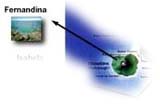

 |
 |
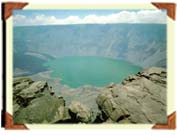 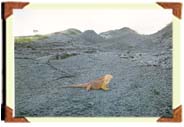 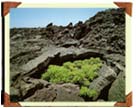  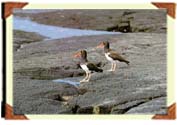 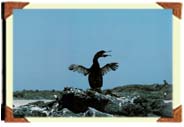 |
With its dark, rocky shores, black
sand beaches, and frequent volcanic upheavals, Fernandina, west
of Isabela, seems in many ways the most forbidding and yet the most
fascinating of the Galapagos islands. Its wildlife reflects Fernandina's
primeval character. Like hundreds of small dragons, enormous armies of
marine iguanas guard the coastlines, in particular at Punta Espinosa,
at the northeastern edge of the island.
These creatures are the only known lizards to have adapted themselves to a life dependent on the sea, feeding on the green algae that blooms in the intertidal areas and on the lush carpet of seaweed several feet below the water's sur, face. A vast array of animal life, comparatively rarely touched by, human contact, thrives in these nutrient-laden waters, and the profiles of the endemic flightless cormorant, with its ancient looking ragged wings, Galapagos penguins, and sea lions can be distinguished among the rocks. Punta Espinosa is rimmed at its base with a forest of green mangroves and a wide swath of lava and shell sand. On other parts of the coastline, such as in the waters surrounding Cape Douglas, for seals are found. No introduced or feral animals roam here, making species that survive only in small numbers or not at all on other islands, like the iguanas and the small native rice rat, common. Fernandina also boasts a large population of land iguanas, although the favored nesting ground of these lizards, the rim of the single volcano's caldera, has been destroyed by recent eruptions. Fernandina is the newest of the Galapagos volcanos, with the exception of the Volcan Chico Oreo of Sierra Negro on Isabela, and it remains one of the most active. Its youth is evident in its lack of signs of erosion and its bareness of vegetation, and from the sea it looms like a large, rounded shadow. Near the coast its slope is gentle, but inland the mountain gradually steepens, rising to some 4,900 feet before it levels out at the rim of the 3,000-foot-deep caldera. Fernandina has erupted several times in the last few decodes. The majority of the eruptions were of fluid basaltic lavas, which flowed down the inside of the caldera, but the most dramatic explosion occurred in 1968, when the caldera floor itself dropped by almost a thousand feet, producing hundreds of earthquakes and sending up a tall pillar of ash, which traveled for many miles. The lake in the caldera has also led an unsettled life, changing positions from one side of the crater to the other; a result of crustal shifts and even disappearing twice, most recently with the eroption of the volcano in September 1988. 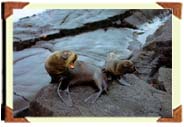 .... ....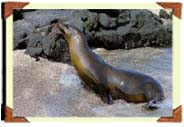 |
|
|